Poison-ivy Toxicodendron radicans
Family: Anacardiaceae (Cashew)
Branching: Alternate
Other names: Rhus radicans
Probably the most notorious plant in the forest, Poison-Ivy
grows as both a creeping ground cover and as a branching vine. In
Tennessee, I observed it once growing as an independent shrub as tall
as myself. Generally it is a non-conspicuous plant in the winter,
especially in the North where it rarely grows as a vigorous vine.
However, in Southern Ontario vines are quite common and they can
become quite large, with stalks sometimes as thick as a person's arm.
In this growth form they often send of large branches that can be
mistaken for those of a tree. Poison Ivy buds are naked, which
puts them in a minority group. But their yellowish colour can
make them look a bit like Bitternut Hickory, Witch-hazel or Glossy Buckthorn. The leaf scars are
one of the distinctive feature when twigs are examined. Also,
look for the fruit or the aerial rootlets (which generally look
different than those of Virginia Creeper).
When it is found trailing on the ground, its form closely
resembles Virginia Creeper. Both grow along a horizontal stem and
send up shoots several inches high. When twigs are seen, though,
the leaf scars will always sperate those two.
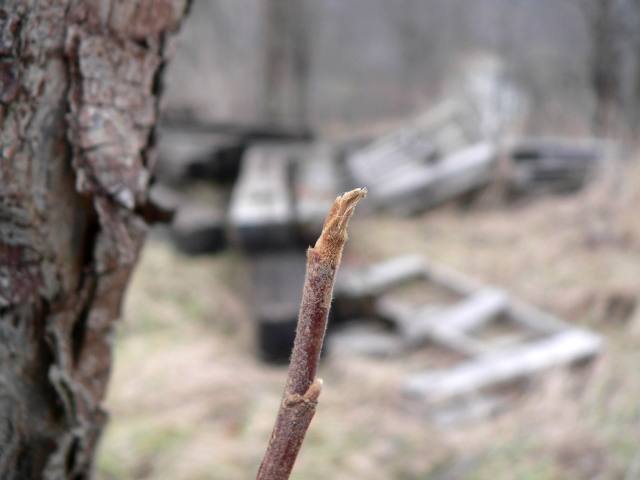
Poison Ivy end bud; hairy, naked and slightly yellowish
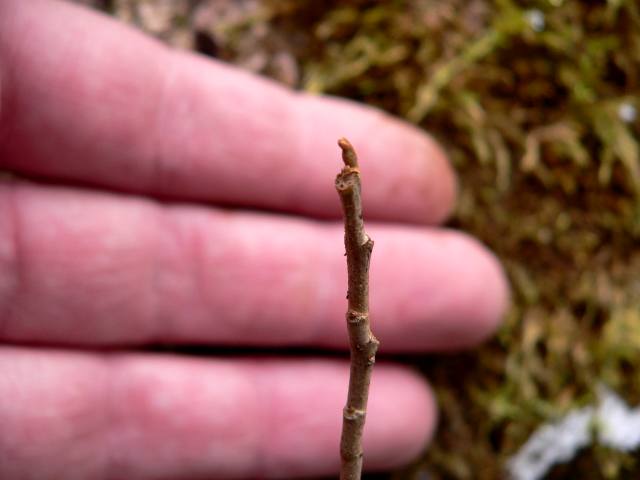
Another view of the winter twig. Notice how the leaf scar sticks out from the twig and almost
makes a "ledge"
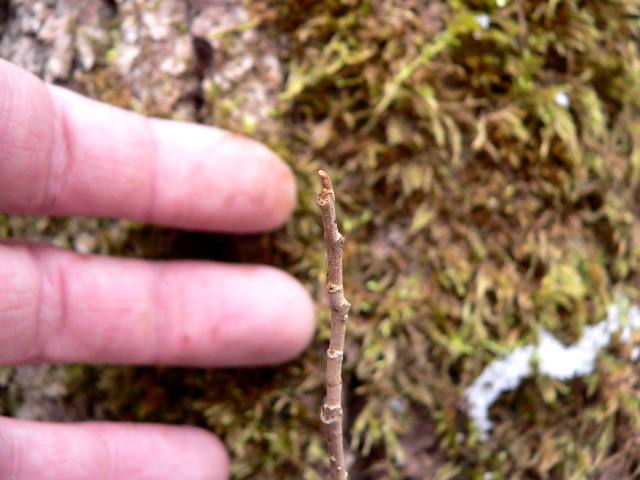
Another view of the twig (same plant)
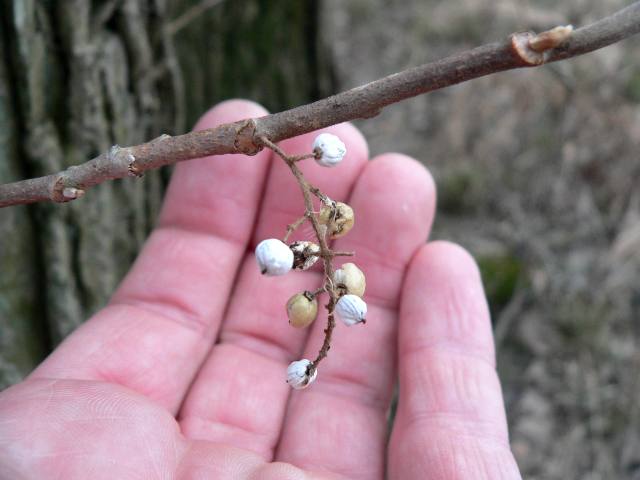
The white berries of Poison Ivy. These are quite distinctive.
The leaf scar in the top right corner (it's out of focus) is a great example of its unique form
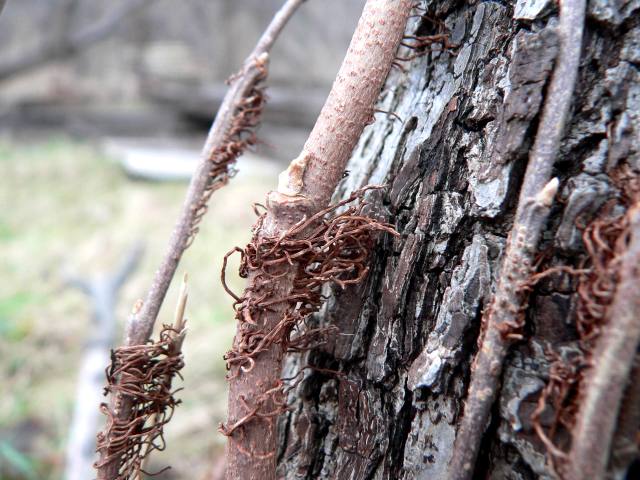
The "aerial rootlets" by which Poison Ivy climbs

Another view of the main stem
Back to the
main page
copyright
© 2007 Josh Sayers
please email me with any questions, comments, or errors